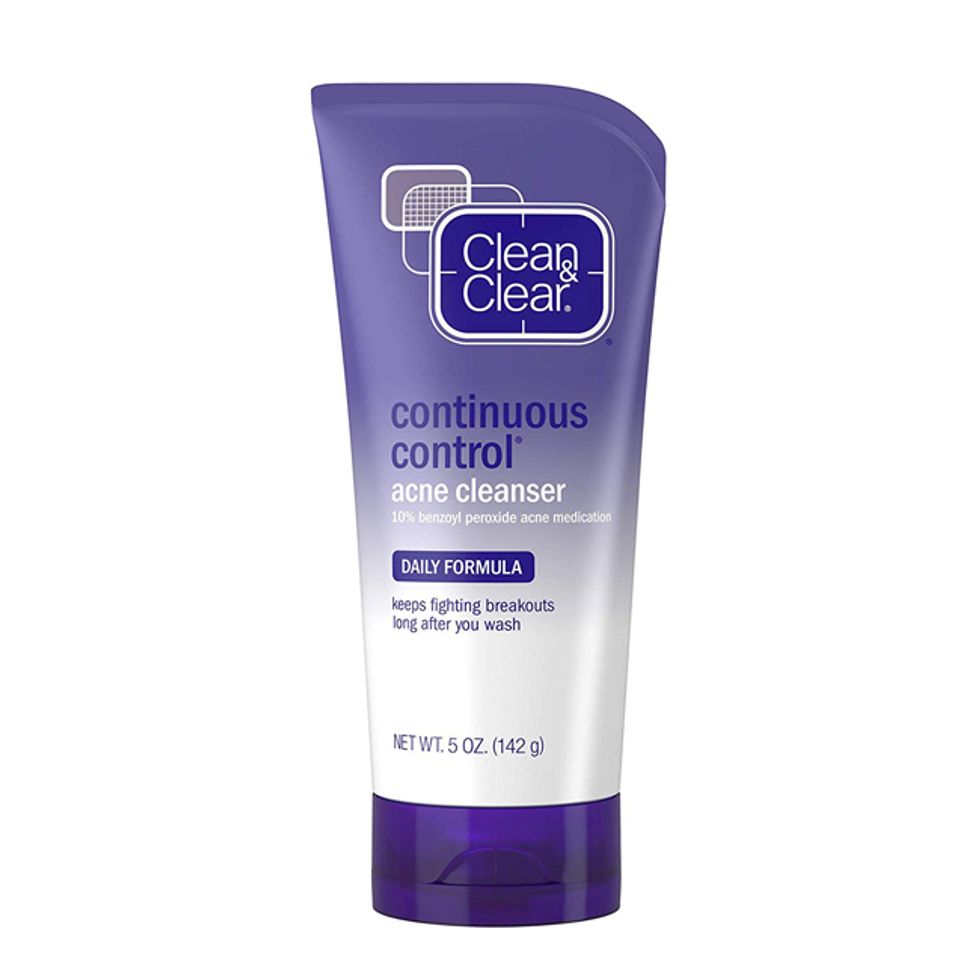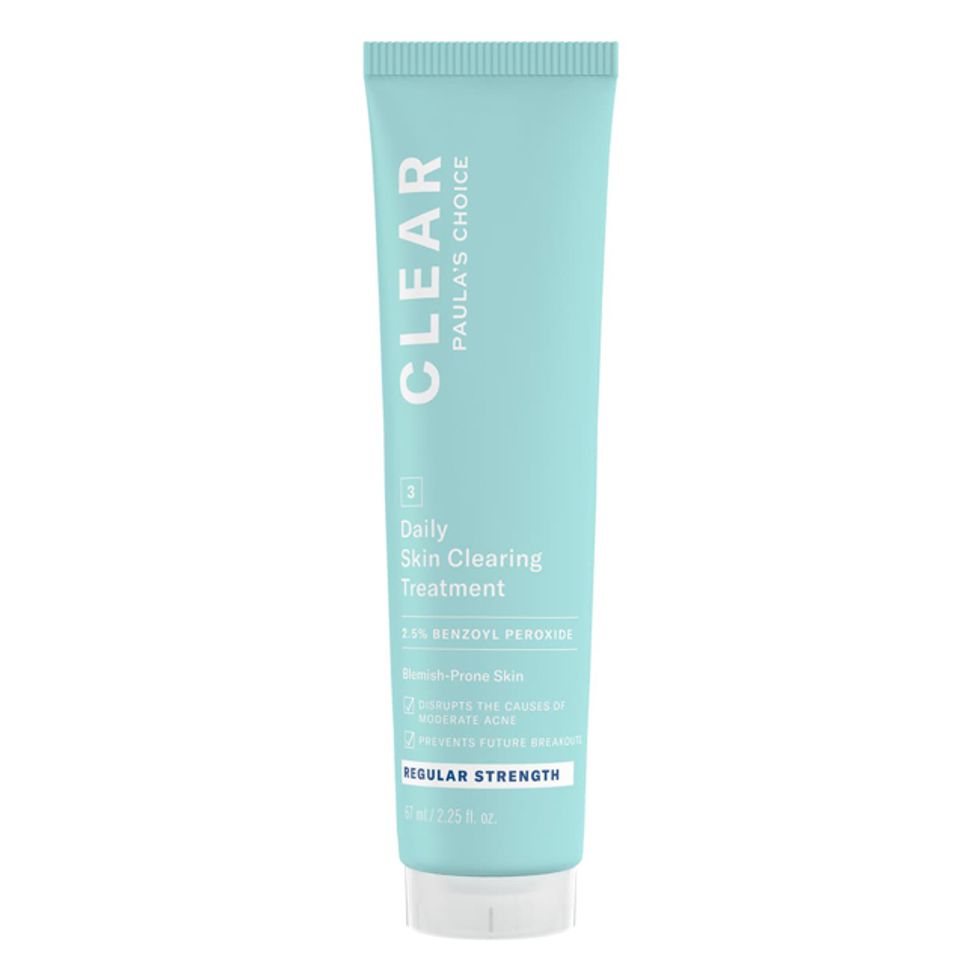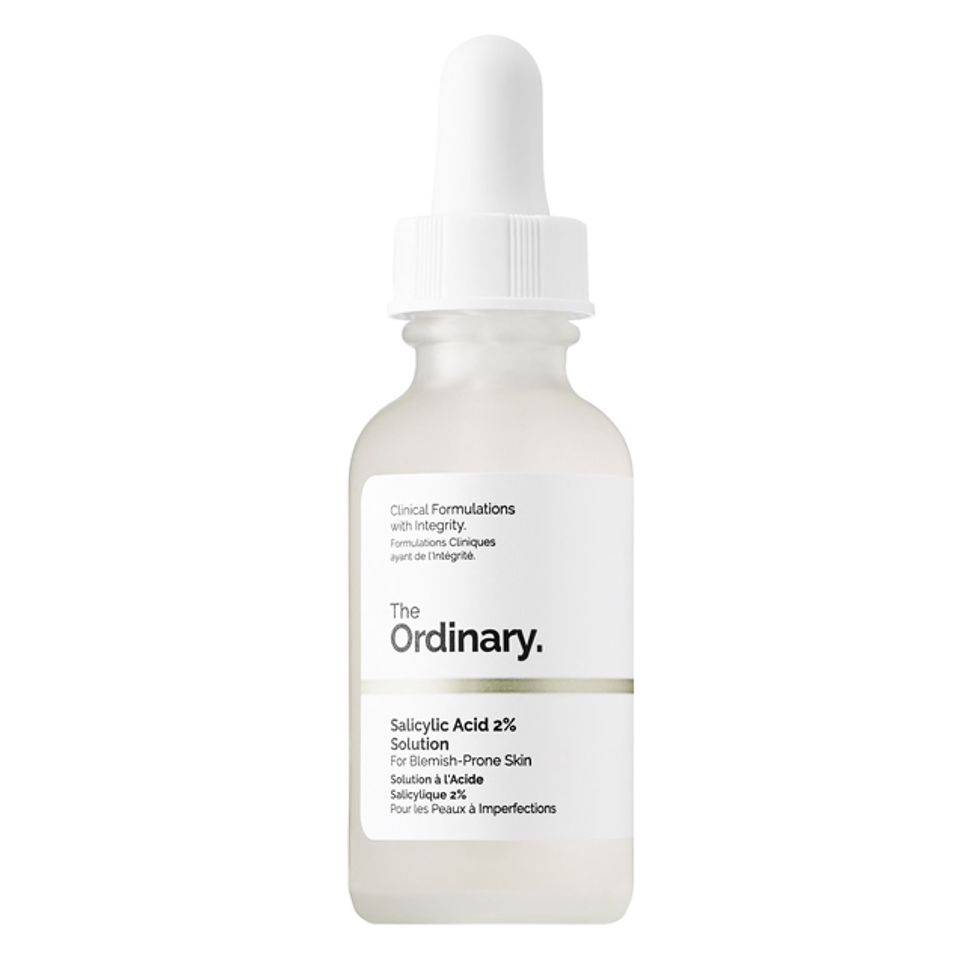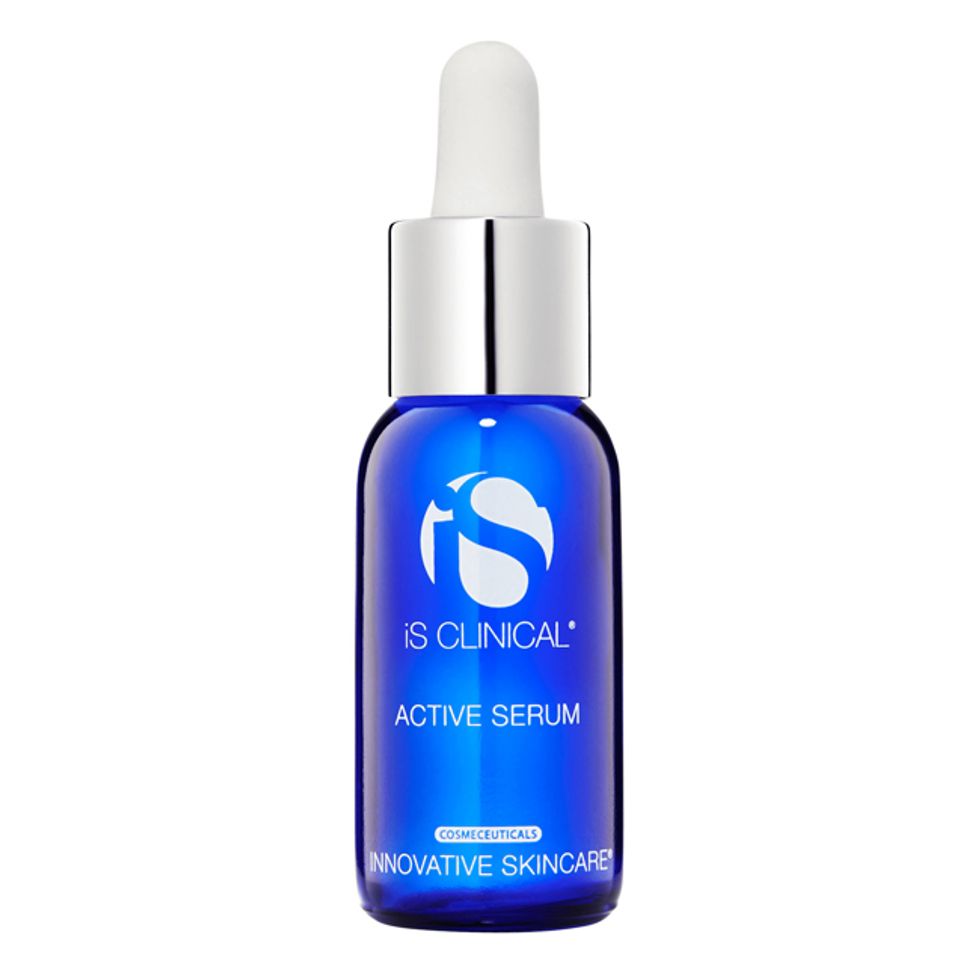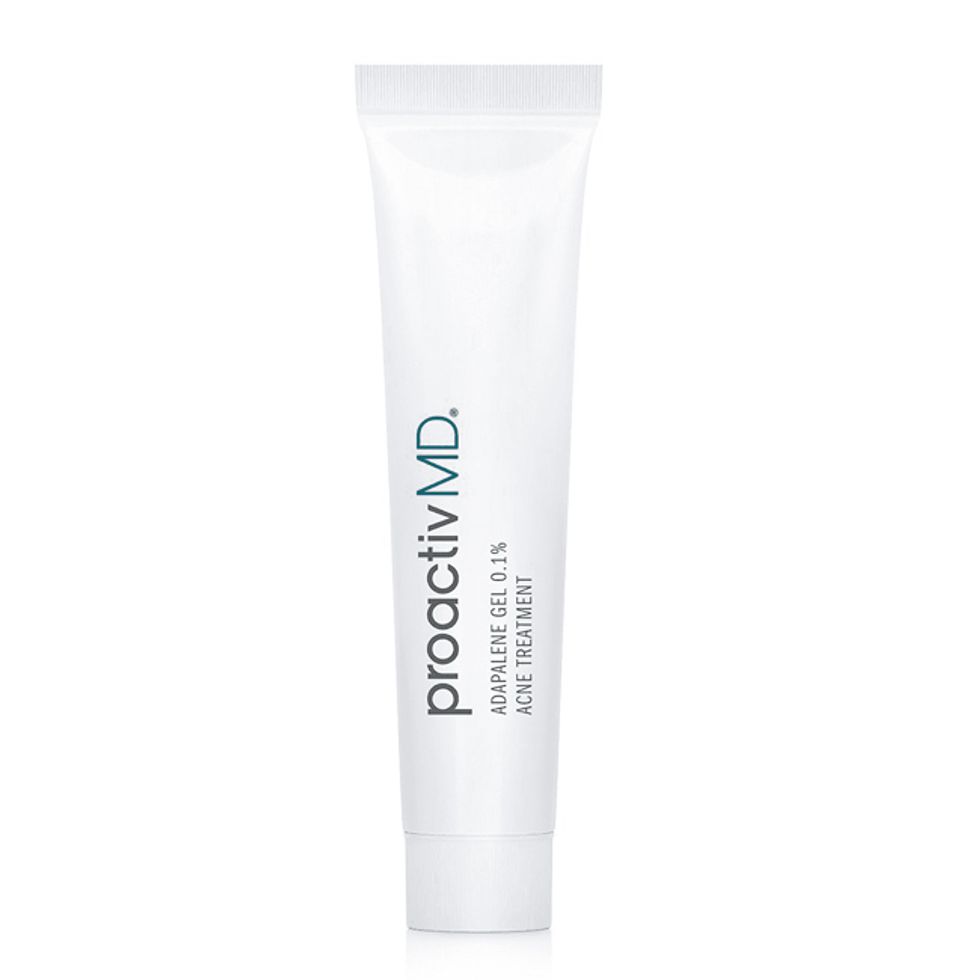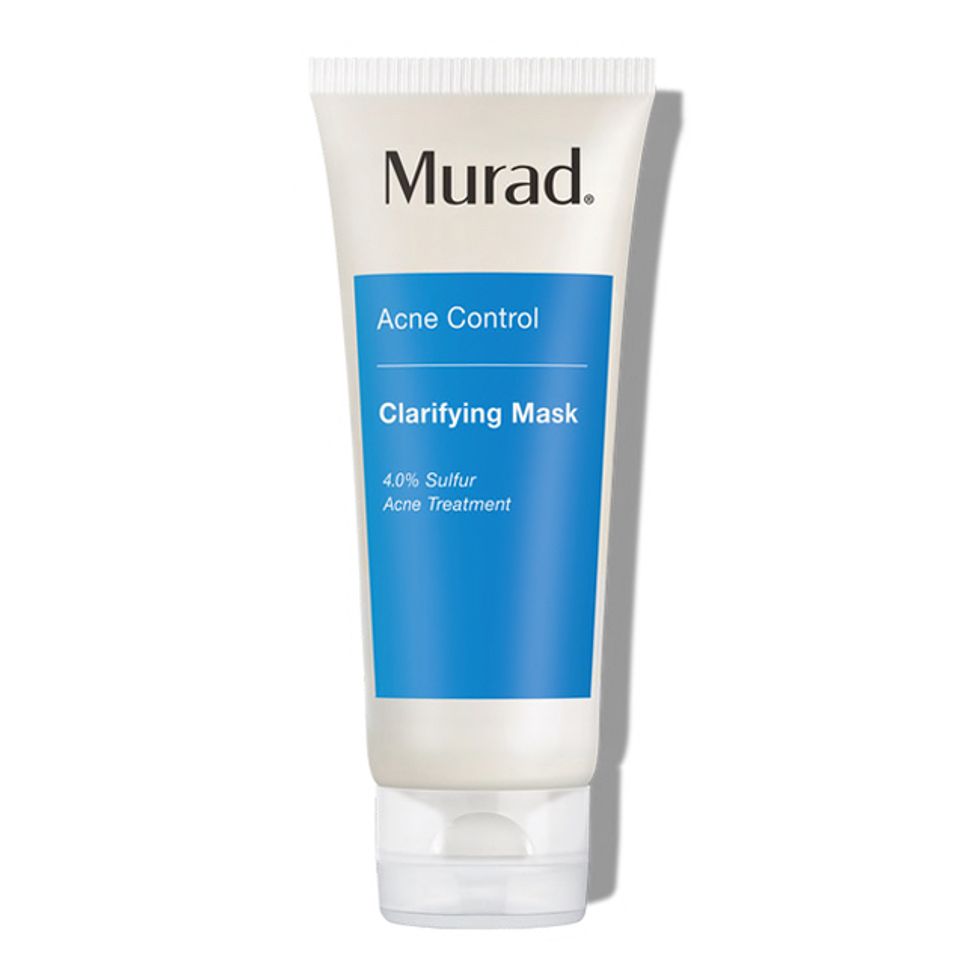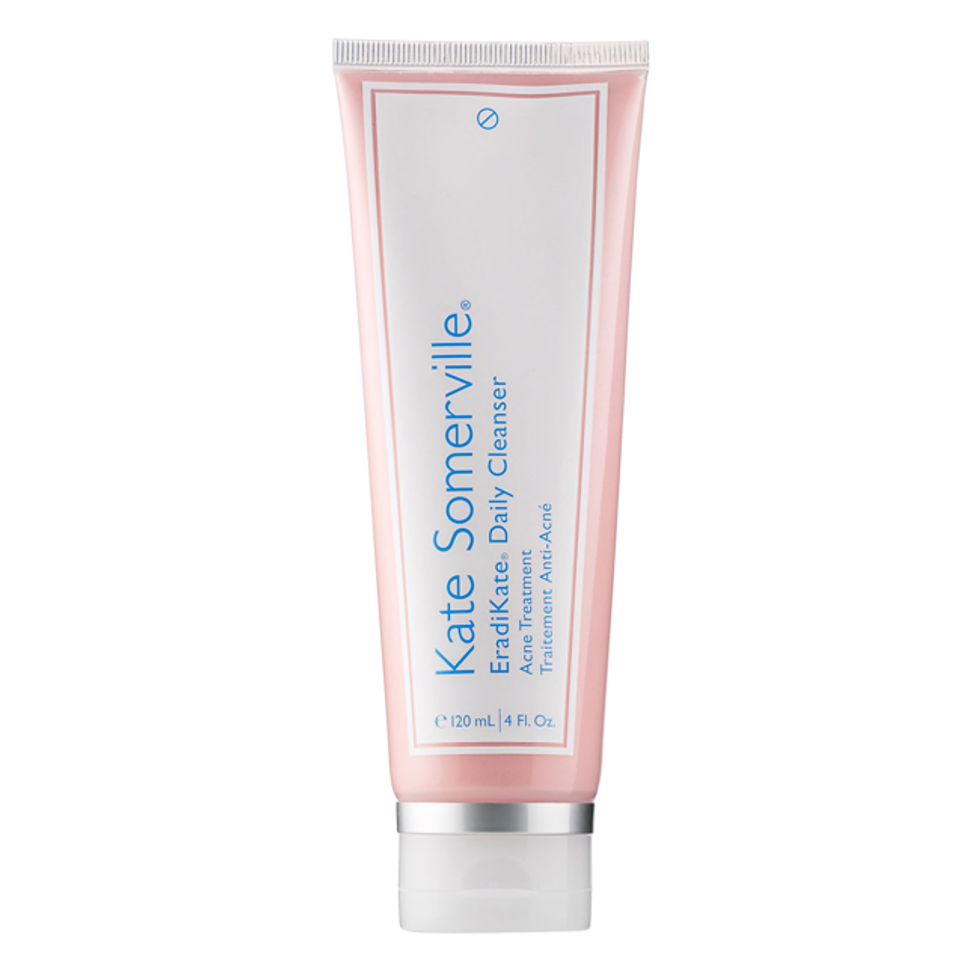Skin
Hormonal Acne: Why You Have It & How to Treat It
2 top dermatologists share their best advice for keeping hormonal breakouts at bay.
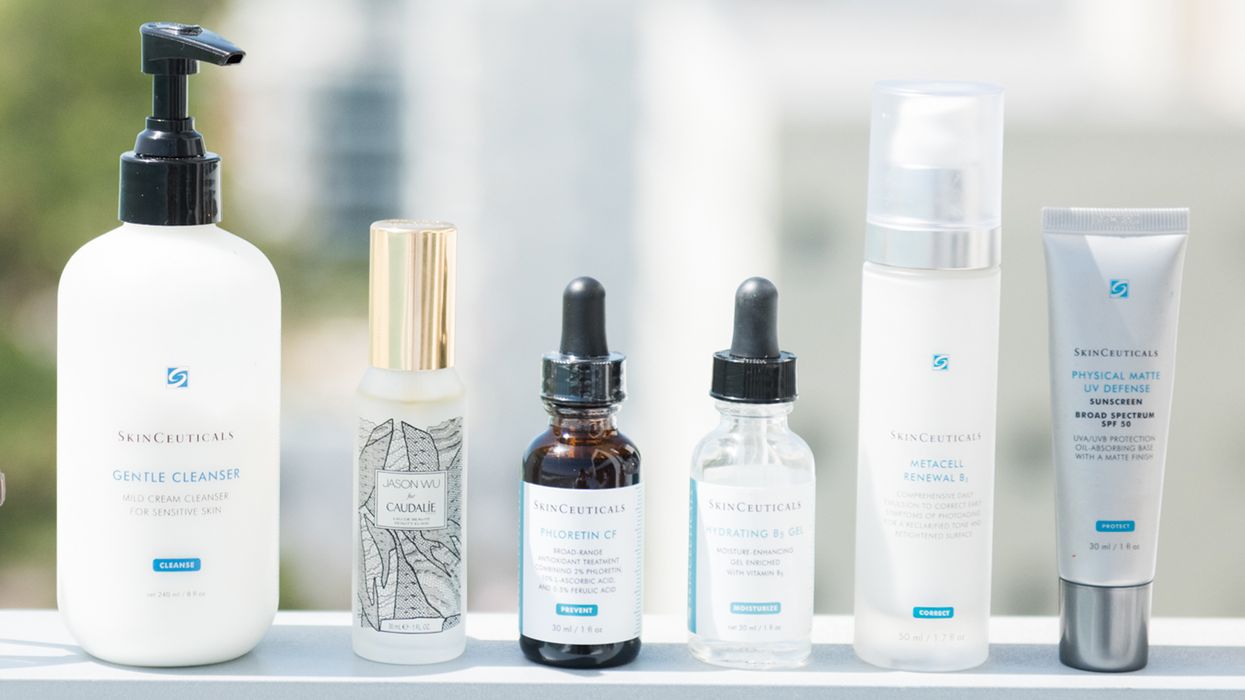
09 December, 2019
Renée Rodenkirchen
10 November, 2021
When we were teenagers, we often fantasized about all the incredible things we’d finally be able to do once we were adults—live in our own apartments, manage our own schedules, accumulate drool-worthy closets. Not to mention all the things we couldn’t wait to give up, like curfews and those annoying pimples that plagued us ever since puberty. But in a cruel twist of fate, we’ve discovered that not only has our acne not faded into a distant memory once we hit our 20s, but it has morphed into an altogether different kind of breakout, one that is even harder to treat: hormonal acne. If you are among the estimated 40–60 percent of adult women who are struggling with these types of breakouts, you know exactly how frustrating the struggle for clear skin can be.
We looked into why this specific type of acne is so tough to manage so that you no longer have to resign yourself to a cycle of cysts, scars, and heavy-duty treatments. Dr. Joshua Zeichner, director of cosmetic and clinical research in dermatology at Mount Sinai Hospital, and Dr. Melissa Kanchanapoomi Levin, board-certified dermatologist and founder of Entiere Dermatology, shared their insights on everything from causes to product recommendations so that you never again have to feel powerless against your breakouts. Learn everything they had to say about hormonal acne below.
We looked into why this specific type of acne is so tough to manage so that you no longer have to resign yourself to a cycle of cysts, scars, and heavy-duty treatments. Dr. Joshua Zeichner, director of cosmetic and clinical research in dermatology at Mount Sinai Hospital, and Dr. Melissa Kanchanapoomi Levin, board-certified dermatologist and founder of Entiere Dermatology, shared their insights on everything from causes to product recommendations so that you never again have to feel powerless against your breakouts. Learn everything they had to say about hormonal acne below.
Acne in Adults
As much as we wish it were true, you’re not going to wake up on the morning of your 20th birthday with perfectly clear skin. Same goes for your 30s, 40s, and (gasp) even your 50s. Says Dr. Zeichner, “It is estimated that 50 percent of women in their 20s, 35 percent of women in their 30s, 26 percent of women in their 40s, and 15 percent of women over 50 suffer from acne.”
Dr. Levin confirms those stats and adds: “Interestingly, there has not only been a clinical observation, but clinical and large-scale epidemiological studies that have demonstrated a rise and increasing percentage of women affected by acne more than men in their adult years.”
Identifying Hormonal Acne
Technically, all acne is hormonal in some way, regardless of age or gender, but Dr. Levin explains that there is a reaction that is particular to people who suffer from these types of breakouts. “Adult female acne is more than just fluctuations in hormones, whether it’s variable during a menstrual cycle, pre-menstrual, or those with frank hormonal abnormalities. There is increasing thought and data that those with adult female acne may have a hypersensitivity in their skin to hormones.”
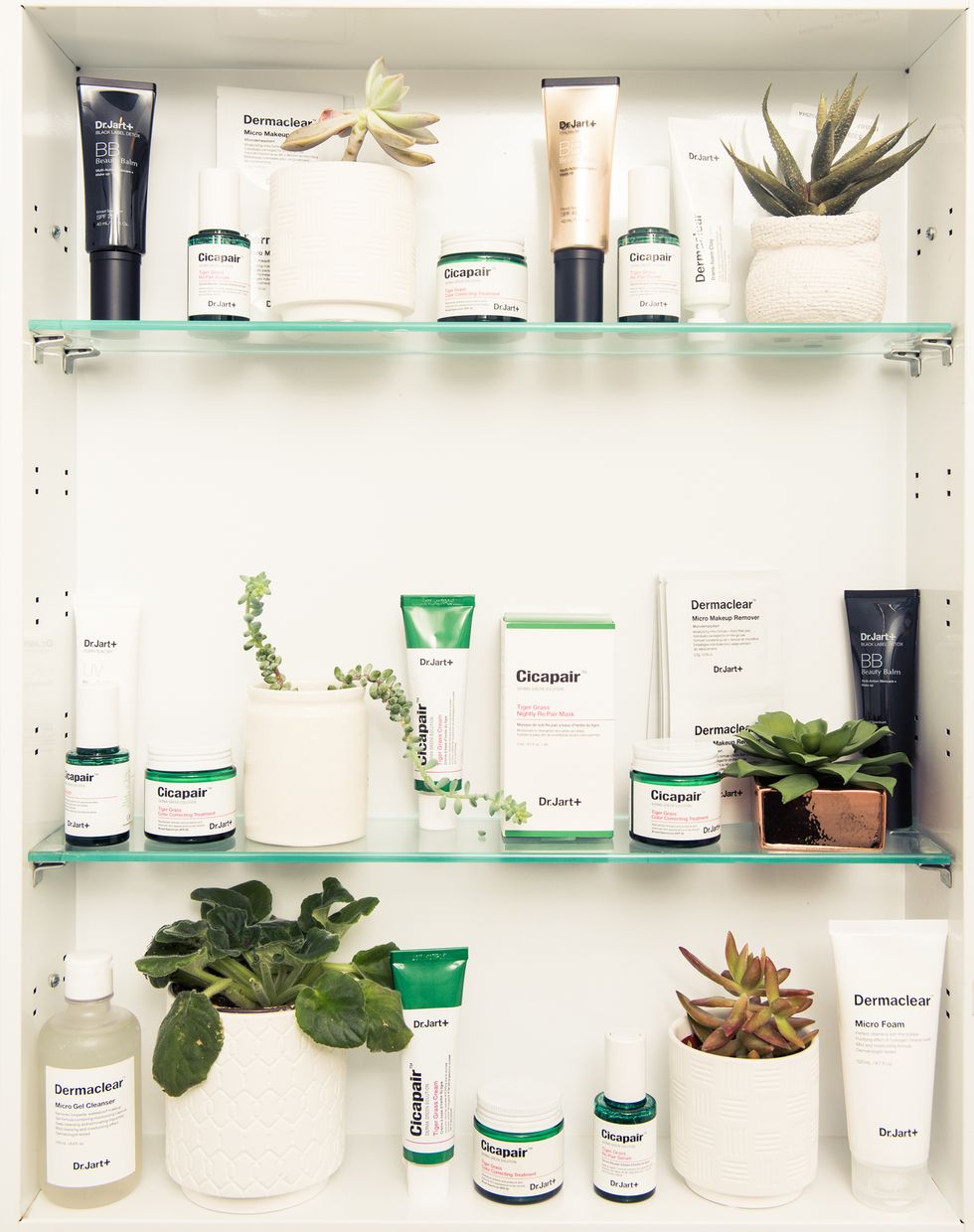
So how can you tell by looking at the breakouts what kind of acne you’re dealing with? Says Dr. Levin, “Classically, adult female acne is thought to present with mild to moderate red inflammatory papules (bumps) along the jawline and chin. There was a [2015] study that challenged this finding, and based on the data, women with adult acne presented very similarly to adolescents with acne, with involvement on the cheeks, forehead, and nose as well.” Dr. Zeichner elaborates that these angry red bumps will be in contrast to the mix of blackheads, whiteheads, and similar breakouts that present during the teenage years.
The hormones that are causing such chaos in your skin are called androgens, which are commonly known as the male sex hormone but are in fact present in females as well. “Androgens, like testosterone, stimulate oil gland activity, leading to inflammation and blockages within the pores,” says Dr. Zeichner. “Because of cyclical fluctuations in hormone levels during the menstrual cycle, some women tend to break out around the time of their period every month.”
The hormones that are causing such chaos in your skin are called androgens, which are commonly known as the male sex hormone but are in fact present in females as well. “Androgens, like testosterone, stimulate oil gland activity, leading to inflammation and blockages within the pores,” says Dr. Zeichner. “Because of cyclical fluctuations in hormone levels during the menstrual cycle, some women tend to break out around the time of their period every month.”
Beneath the Skin’s Surface
According to Dr. Zeichner, “Hormones like testosterone and its more active form, known as dihydrotestosterone or DHT, bind to receptors on the oil glands. This stimulates activity of the glands to produce more oil. Besides directly blocking the pores, there is a pro-inflammatory effect that promotes the development of pimples.” Increased oil production is just one of the many reasons that regular exfoliation is so important to your skin-care routine in order to clear dead skin that can clog pores and cause additional breakouts.
Hormonal Acne vs. Teenage Acne
The same way you might notice minor aches and pains more frequently as you get older, your skin is also aging and becoming less resilient. “Adult skin turns over less frequently,” explains Dr. Levin. “It takes much longer to see a result from a topical medication than in teenage skin.” That’s why you might struggle to treat your breakouts with the topical products of your youth.
Says Dr. Zeichner, “There are likely differences in the quality of oil produced and levels of acne-causing bacteria on the skin of adult women versus teenagers, [which explains] the different clinical appearance of the acne.” That’s why the red, inflamed, and sore pimples and cysts can be so distressing—they’re not only tougher to treat, but they are also more difficult to cover with foundation and concealer, should you choose to do so.
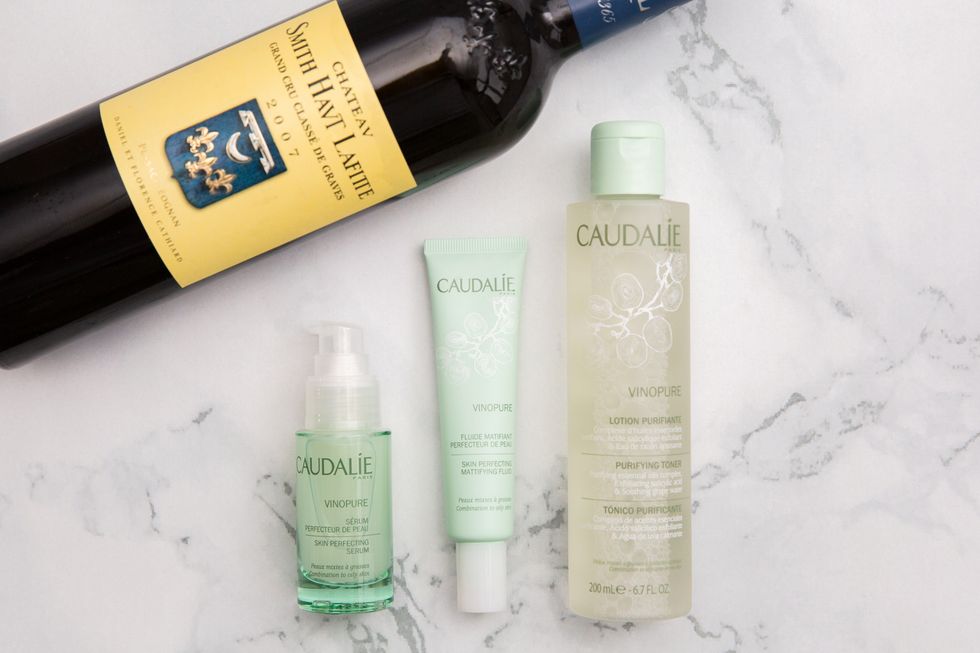
Hormonal Acne & Birth Control
If you’ve struggled with hormonal breakouts and seen a dermatologist to help, they’ve likely offered you a few different forms of birth control. Or, on the flip side, you’ve tried a new birth control method, like an IUD, and watched your skin spiral out of control in a matter of weeks. It can feel like a game for which you don’t understand the rules, and the added stress can make your skin look and feel even worse. So what gives?
Says Dr. Levin, “In general, birth control pills can be used to address adult female hormonal acne by decreasing androgens. When women discontinue birth control pills, there can be another hormonal adjustment which can cause breakouts for three to six months.”
If you’re looking to start a new prescription pill, there are four that have been FDA-approved to treat acne: Yaz, Ortho Tri-Cyclen, Beyaz, and Estrostep FE. Dr. Zeichner explains that of the four, Yaz and Beyaz contain a progestin called drospirenone that actually blocks the activity of the oil glands. He also reveals that while there is no definitive research at the moment, hormone-releasing IUDs (like Mirena, Kyleena, Liletta, and Skyla) may promote acne breakouts. “I don’t recommend them if you are acne prone,” he says. Non-hormonal IUDs, like the copper ParaGard, don’t directly affect your hormone levels, so it will neither exacerbate nor reduce the amount of hormonal acne you may experience.
Hormonal Acne & Diet
Yes, your diet can impact the way your hormones affect your skin, but there’s no need to embark on some impossible-to-follow eating plan or a current fad. In general, giving your body the vitamins and nutrients it needs to thrive will only help your skin recover from existing breakouts and prevent excess oil production that leads to future ones.
“Diet may promote acne,” says Dr. Zeichner. “Whey protein supplements and vitamin B12 have also been shown to cause acne. Foods with a high glycemic index, meaning they have a high sugar load, may promote inflammation and stimulate oil production. The same is true of skim milk. Interestingly, cheese and yogurt have not been associated with acne.”
(Pause for a celebratory cheese dance!)
Dr. Levin advises the same of her patients. “I typically recommend first a low-glycemic diet, cutting out refined carbohydrates and sugar, as well as eating a heart-healthy diet with vegetables, fruits, lean meats, nuts, and seeds.” A balanced meal regimen will help your skin glow and heal itself from the inside out.
Over-the-Counter Treatments
“Since many adult women and men feel as though they ‘shouldn’t be breaking out,’ there is a factor of panic,” says Dr. Levin. “Patients are frequently using so many different products that can dry and irritate the skin, which makes acne worse.” We know we’ve definitely gone down this spiral of using too-harsh products on skin that’s already stressed, to the point that it feels like nothing satisfies the need for a potent yet gentle acne treatment.
Luckily, there are many over-the-counter options, which Dr. Zeichner breaks down into four ingredient categories: benzoyl peroxide, salicylic acid, adapalene, and sulfur.
1. “Benzoyl peroxide lowers levels of acne-causing bacteria and helps reduce inflammation.”
2. “Salicylic acid helps dry out angry pimples, removes excess oil from the skin, and keeps the pores clear.”
3. “Adapalene is a topical retinoid that prevents skin cells from sticking together and blocking the pores. It helps reduce inflammation in the skin.”
4. “Sulfur has anti-microbial and anti-inflammatory benefits and can be used even in people with sensitive skin.”
Dr. Zeichner also recommends treating the entire area that is prone to breakouts, rather than keeping the topical isolated to the legion itself. “Not only do you want to treat pimples you have, but also you want to prevent new ones from popping up. We cannot predict where the next pimple will be, so it is important to treat the entire area.”
You should expect to see results in two to four weeks; after that, it is recommended that you visit a professional for an evaluation and a customized treatment.
Professional-Grade Topicals
While we always recommend visiting a dermatologist whenever you have a question about your skin health (and to undergo a yearly head-to-toe skin check), it’s crucial for treating recurring hormonal acne that is not responding to over-the-counter options. Just remember that it can take a bit longer to see the full effect of these topicals—it is often advised to wait 12 weeks before deciding that a course of treatment doesn’t work. Patience is a virtue, as frustrating as that can be when it comes to your skin.
This is also where retinoids come into play. They are top-tier when it comes to treating a variety of skin issues, especially acne. Says Dr. Levin, “There are essentially three types of retinoids, all of which are vitamin A derivatives. Differin Gel became the first FDA-approved acne-treatment retinoid that is over-the-counter, [which] is a game changer. Retinoids are the absolute backbone of an acne treatment, since they treat and prevent acne by de-clogging pores, normalizing skin cell turnover, and [functioning] as an anti-inflammatory.” Retinoids also help improve skin discoloration and texture (courtesy of pesky acne scars) so that your complexion is restored to its original dewy glory.
Dr. Zeichner also informed us of newly FDA-approved acne treatments that are set to be released and available at your dermatologist’s office in the next few months. “The first is called Winlevi, a topical cream that actually decreases the amount of oil that your sebaceous glands produce. Amzeeq is a new topical formulation of the antibiotic Minocycline. Aklief is a new topical retinoid specific for the specialized retinoid receptors most commonly found in the skin.” More products means more options for getting rid of even the most stubborn acne breakouts.
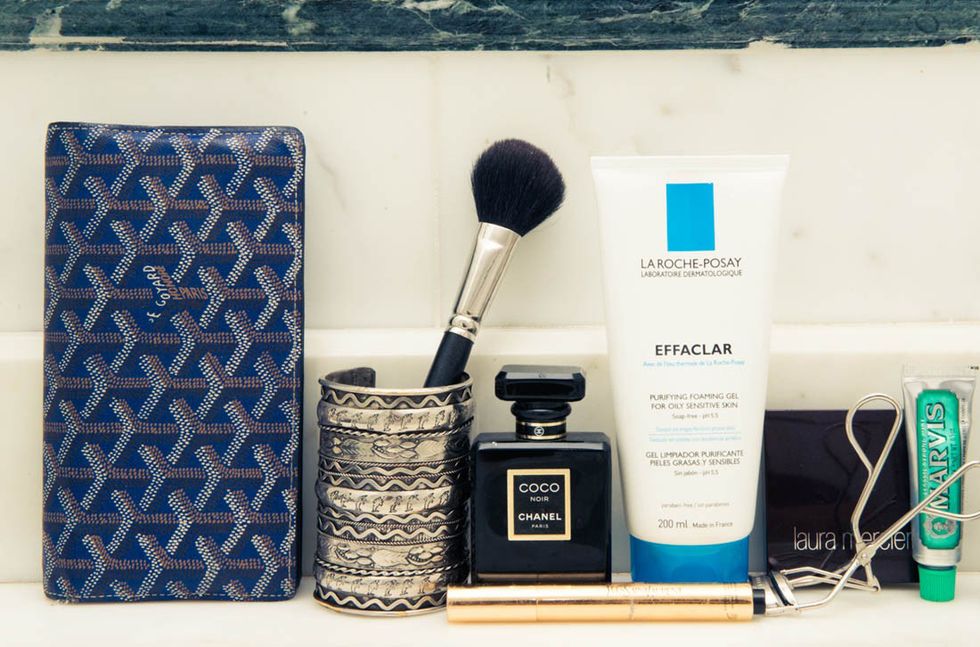
Additional Treatments
When you’re truly at your wit’s end with your hormonal acne breakouts, there are a few other treatments aside from the usual topicals for you and your doctor to explore. Says Dr. Levin, “A few of my favorite acne medications for adults [dealing with acne] in their 30s are Aczone and Spironolactone. Aczone is a once-daily topical prescription gel that I frequently prescribe as a dermatologist. The active medication is dapsone, an antimicrobial and anti-inflammatory [that] has been proven to help treat not only deeper, red, painful pimples, but also blackheads and whiteheads.” She explains that unlike many other topical formulas, Aczone doesn’t cause extreme dryness or irritation, so that you can combine it with the rest of your acne-fighting regimen.
Spironolactone is another medication that has quickly become a staple among beauty industry insiders (this editor has been on it for years). “[It is] my go-to medication for female adult acne (think cystic, deep, tender lesions on the jawline and chin). It was originally formulated to treat hypertension (high blood pressure), but at lower doses, it is used for hormonal acne because it is an androgen blocker and a diuretic.” Your doctor can prescribe anywhere from 50–100 mg daily, and you will typically see results in three months; however, you will need to stay on the medication to maintain the results, and side effects can range from light-headedness to excessive urination, breast tenderness, and menstrual spotting.
Other ingestible treatments include oral antibiotics, which, as Dr. Zeichner explains, help reduce inflammation from the inside out when used in tandem with topical medications. “A new oral antibiotic known as Seysara recently hit the market. It is a sister medication to Doxycycline or Minocycline [and] has been shown to clinically improve the skin as quickly as three weeks.”
Then there is Accutane, “an oral vitamin A derivative that helps lower oil production, reduce inflammation in the skin, lower levels of acne-causing bacteria, and prevent skin cells from sticking together and blocking the pores.” Dr. Zeichner views it as an extremely effective treatment option, but due to the cyclical fluctuations of hormone levels in adult women, hormonal acne will often recur after discontinuing the course of treatment. “For this reason, Spironolactone may be a more effective long-term option for adult women [dealing with hormonal acne].”
Acne Doesn’t Have to Last Forever
Hormonal acne, like all forms of acne, is not a direct cause-and-effect condition, but rather is influenced by a myriad of things like your environment, age, stress, diet, and general life status. Dr. Zeichner reminds all of his patients that “developing acne does not mean that something is wrong with you. Adult acne is increasingly common and is perhaps the number one medical reason that patients come to see me in the office.”
It is normal to feel distressed or frustrated when it seems like you can’t get your skin under control, but visiting a professional for their guidance and product recommendations is the next best step if over-the-counter treatments aren’t working. Says Dr. Levin, “The important factor of adult acne that I stress to my patients is the nature of the condition, which is frequent recurrence and the need for maintenance of long-term treatment and care, and if possible, with a board-certified dermatologist. Treatments change based on a woman’s current life situation, whether she is planning to get pregnant, is pregnant or breastfeeding, or the status of the skin’s hydration and skin barrier, and compatibility with their ongoing skin-care routine.”
Remember that every year there are new treatments developed and cutting-edge research published regarding hormonal acne, which means that no one has to suffer from this incredibly common skin disorder. With a dermatologist to guide you, you can limit your breakouts to the occasional rogue pimple, rather than an entire situation of painful cysts and clogged pores. And with a new year on the horizon, there’s never been a better time to take control of your skin. Consider this your first step.
Want more stories like this?
The 8 Most Effective Types of Over-the-Counter Acne Treatments
16 Beauty Tools That Are Worth the Investment
How to Keep Your Skin Healthy This Winter


